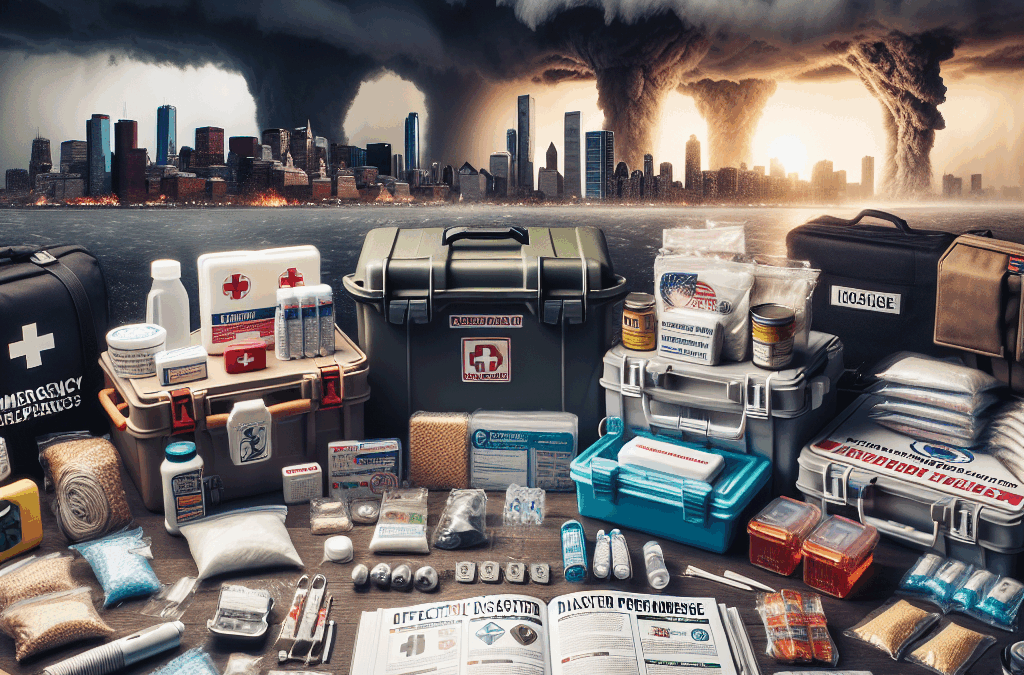Disasters can strike when we least expect them, from raging wildfires and devastating floods to sudden earthquakes and severe storms. Understanding the risks in your area is the first step towards effective disaster preparedness. Identify potential threats by researching local history, consulting with emergency management agencies, or participating in community discussions. Knowledge is power—knowing what could happen helps you prepare accordingly.
Once you’re aware of the risks, it’s time to build an emergency kit. This kit should be tailored to your household’s specific needs but generally includes essential supplies like water (one gallon per person per day for at least three days), non-perishable food items, a flashlight, batteries, a first aid kit, and necessary medications. Consider adding important documents (like insurance policies and identification) stored in a waterproof container as well as personal hygiene products. Don’t forget about your furry friends; include pet supplies if you have animals in your home! Regularly check and refresh the contents of your kit to ensure everything remains usable.
Creating a family disaster plan is equally crucial. Sit down with your loved ones to discuss evacuation routes, meeting points, and communication strategies during emergencies. Assign roles so that everyone knows what to do when chaos ensues; this clarity offers peace of mind amid uncertainty. Designate a contact outside your immediate area who can serve as a point of communication if local lines go down—this could be invaluable for coordinating safety across distances.
Staying informed plays a paramount role in disaster preparedness. Sign up for local alerts via apps or services that provide real-time updates on weather conditions and emergency situations. Familiarize yourself with NOAA Weather Radio or utilize smartphone apps dedicated to alerting users about impending disasters in their vicinity. Having access to timely information will empower you to make informed decisions quickly—whether it’s evacuating before a storm hits or seeking shelter during an unexpected crisis.
While individual preparedness is vital, community resilience enhances overall safety during disasters. Engage with neighbors through local initiatives such as neighborhood watch programs or community preparedness workshops. Collaborate on creating emergency plans that encompass collective resources like shared tools, food supplies, or even designated safe spaces during emergencies. Building relationships strengthens social ties; together you can create networks where support flows freely during turbulent times.
Moreover, consider volunteering with local organizations focused on disaster response efforts—they often provide valuable training opportunities while fostering connections among residents who share similar concerns about safety and well-being.
Thank you for reading this post, don't forget to subscribe NOW for FREE!
In conclusion, being prepared doesn’t mean living in fear; rather it empowers you with confidence and readiness for whatever may come your way. By understanding the risks unique to your location, assembling an adequate emergency kit tailored to your family’s needs, crafting thoughtful communication strategies through family planning sessions, staying informed about evolving situations around you—and working alongside others—you lay the groundwork for not just surviving but thriving even amidst adversity.
So take action today! Because when it comes down to it—the best time to prepare was yesterday; the second best time is now!
Related Content
- Surviving the First 72 Hours of a Crisis: What You Need to Know
- The Role of Local Authorities in Your Emergency Preparedness Plan
- Be Ready for Anything: Your Ultimate Guide to Emergency Preparedness
- Disaster Preparedness 101: Everything You Need to Know
- Why is first aid training essential for preparedness?






